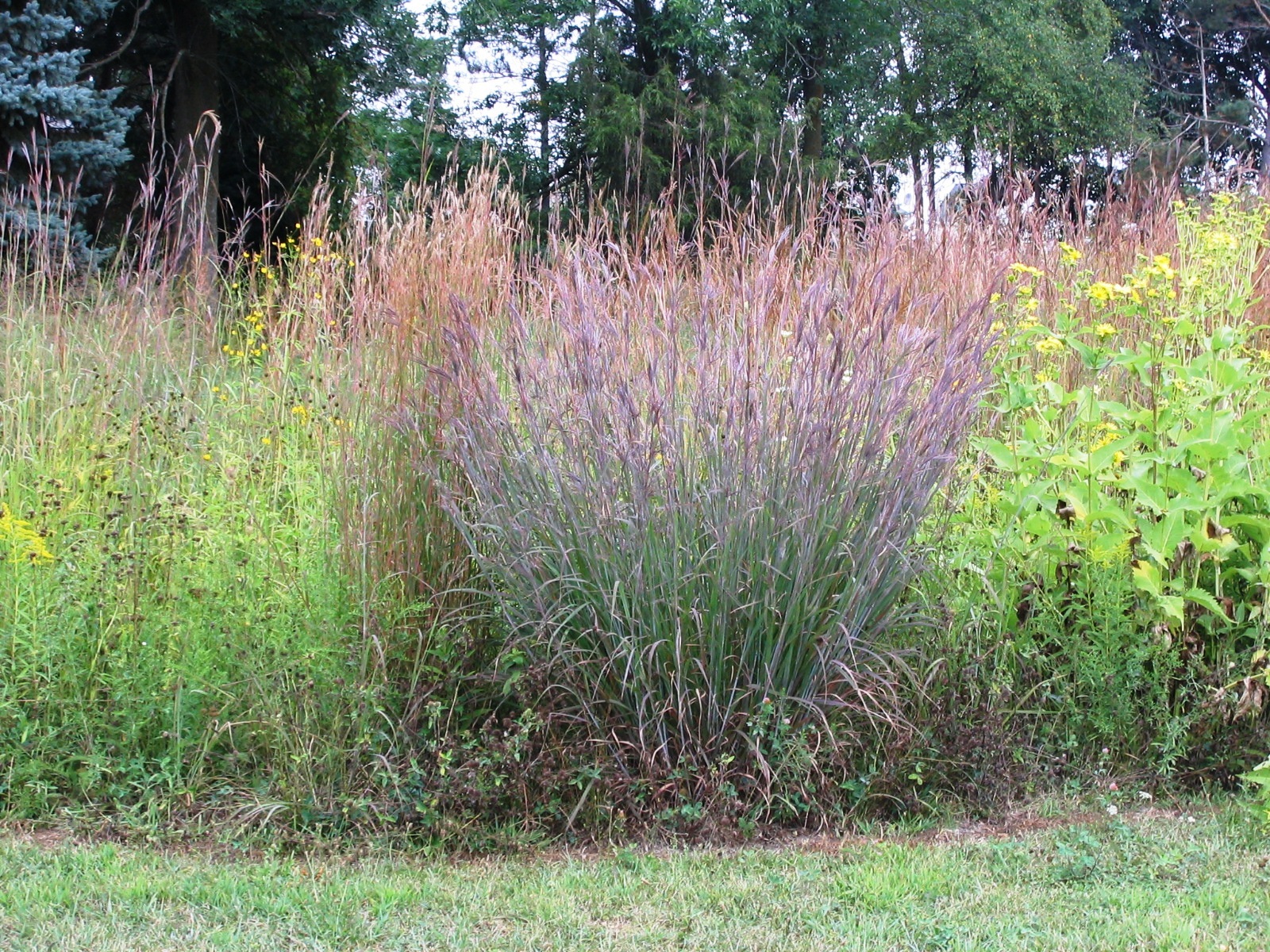

It suits nearly any garden style, from cottage gardens to Zen and modern or contemporary. This native American grass was once the dominant grass across prairies and open woods throughout most of North America.
#Sisachryium blue stem grass how to#
Order The Blues today! How to Use The Blues Little Bluestem in the Landscape This all-around star performer is one of the most versatile perennial grasses one can plant.

This low-maintenance ornamental will grow just about anywhere and will tolerate poor soils. Leave the pretty grass standing for winter to provide food for birds and cover for quail, turkeys, and ground-nesting birds. That rich wheat orange color from fall persists to brighten up the dormant winter season, an outstanding ornamental asset! It's especially attractive when seen poking through a layer of winter snow. Purple flowers rise above the canopy and develop into fluffy silvery seed clusters for early winter interest. The leaves deepen into a coppery hue for a fall color display that simply glows in the setting sun. This colorful plant features delicate foliage in a deep, cool-toned blue borne on rich reddish stems. Watch and listen as the slightest breeze plays through the fine-textured blades and take a nice, deep breath. Use these soothing small plants near your seating areas or along the length of a path to lending a graceful symmetry.

Ornamental Grasses bring welcomed added dimensions as they trace both the sight and sound of the wind. It effortlessly delivers rugged charm with a tidy, erect habit. The Blues is a magnificent cultivar, chosen for its steely blue summer and blazing fall color. It is protected by patent number PP26283.For a wonderful little workhorse in the landscape, get your hands on The Blues Little Bluestem (Schizachyrium scoparium The Blues'). This cultivar was discovered as a seedling of Andropogon gerardii 'Indian Warrior' and introduced by Intrensic Perennial Gardens, Inc. Leaves emerge deep green with red highlights in spring, remain green through much of the summer, change to purplish-red to purple by late summer and finally turn a vivid scarlet red after first fall frost. An excellent garden performer with a clumping form and upright habit. 'Red October' is primarily distinguished from the species by its slightly shorter height, deeper green summer foliage and brilliant scarlet red fall color. Specific epithet honors Louis Gerard (1733-1819), French physician and botanist. Genus name comes from the Greek words aner or andros meaning man and pogon meaning beard in reference to the hairs on the spikelets of some species in the genus.

Flowering stems bring total height of this grass to 4-8' tall (typically at the taller end in moist soils and the shorter end in dry soils). Flowering stems rise in late summer above the foliage clump bearing purplish 3-parted, finger-like flower clusters (to 4" long) purportedly resembling turkey feet (hence the additional common name of turkeyfoot grass for this species). It features an upright clump of stems with flattened leaves (to 2' long and 3/8" wide) which emerge gray to blue green in spring, mature to green with red tinges in summer and turn reddish bronze with lavender tones in autumn after frost. It may be grown as an ornamental grass because of its attractive foliage which changes color seasonally, its good architectural height and its interesting flower/seed heads. Andropogon gerardii, commonly called big bluestem grass, is a tall, Missouri native, perennial, warm season grass that was the dominant grass of the tallgrass prairie which once covered large parts of the Midwest.


 0 kommentar(er)
0 kommentar(er)
